If looking at launching your own scraping project, utlization of proxies comes as an essential step. This can help you to avoid blocks or other obstacles. The proxy market offers a wide range of options, and in this tutorial, we will look at how to use a rotating proxy in Scrapy.
What Are Proxies & Why Do We Need Them?
Proxies can be described as dedicated servers that reroute your traffic to a designated site. In this process, the proxy server hides your real IP address and changes it to a new one that will cover your online activity.
This technology can be useful for lots of different tasks and projects, but in the case of web scraping, proxies are a crucial tool. Data aggregation heavily relies on proxies, because without an IP change, any scraper or parser will eventually face flagging and constant blocks on almost any site. Even if you practice small-scale or one-time projects, there is a good chance you will be blocked halfway.
Proxy services can conceal your actual IP address and spread your connection across several addresses to scrape any data form site you desire. With proxies, you can speed up big projects and continuously gather all the desired data without limits.
Additionally, proxies for web scraping have a feature known as rotation. This way, you can get a new IP address for each new connection. Such a setup is extremely difficult to monitor and block because it’s easy to quickly change your IP and carry on regardless of whether you have a reported IP or not.
More than this, it’s possible to utilize datacenter rotating proxy and other types of servers in different countries and collect valuable insights based on the needed location. For instance, you may verify the placement of the placement of your ads or products on different markets. This feature can also help with managing social media accounts in different countries and markets. For example, you can scrape Zillow or other sites with precise geo-targeting.Proxy comes in numerous forms and formats for different tasks. The two choices that are most prevalent are datacenters and residential proxy. Datacenter proxy come from dataceneters, as the name states. You can get consistent uptime and strong speeds with them, but it is more likely that you will be blocked. Conversely, residential proxies give you a discrete IP address that isn’t going to set off any site alarms. However, you might experience a little bit longer response times and lost connections. There are also options, like static residential proxy, available to you. With the help of these servers, you can perform more delicate tasks that require constant identity.
Get 20% off the original price with our special coupon!
BCR20
The Most Popular Proxy Integration Methods
Lists of proxies, rotation, and APIs are the main methods that are capable of integrating proxy servers into your projects. You will ultimately make a decision based on the needs of the project or your personal preferences, even though each of these options has pros and cons of its own. You must account for your past, present, and future expenses as well as performance needs, geo-targeting, and other fundamental factors in all of the computations.
Some vendors may allow you to set up specific features before purchasing the server, in order to give you a proxy that corresponds to your settings. However, for server pairing and large-scale projects, the most reliable and secure options are typically the API and integration of direct proxy pool. In this way, a proxy can be added to practically any widely used parsing or scraping setup.
How To Integrate & Rotate Proxy Lists in Scrapy
The most straight-forward method to use proxy in Scrapy involves the simple integration of lists with proxy servers. This way, your Python project will be able to alter an IP address for every new request.
Sometimes the Scrapy proxy is available right out of the box, and other times you’ll have to make your own. The following step is to create a custom layer for IP management in order to include proxies in your project. As an alternative, you can delegate all of this work to scrapy middleware.
The market is filled with various options that are more or less reliable. In this tutorial, the option was developed by a group from the Scrapy directly. This tool is called Scrapy rotating proxy and its configuration is simple and flexible. Use the pip install option to begin using this instrument. For large-scale scraping workloads where speed, bandwidth and unlimited request volume matter, you can choose datacenter proxies with unlimited bandwidth — they offer high-speed, unrestricted traffic throughput and seamless rotation, which helps prevent bans and maintain performance when crawling hundreds or thousands of pages with Scrapy.
Following this, you may load the script and add servers by updating the current settings file. However, your project will start using the file containing proxy data for all incoming requests if you specify the file’s path.
The ability of this tool is similar to one written on Ruby and lies in the field of detecting and removing idle servers from rotation. Additionally, custom rules can be used to regulate the way this application handles your proxies.
How To Use Rotating/Backconnect Proxies in Scrapy
These days, many proxy vendors will just give you a convenient endpoint rather than a comprehensive list of servers. You can submit all of your requests there, and the provider will handle the rotation and choice of servers on your behalf.
This actually significantly simplifies the integration of proxy servers into the project. Keep in mind that the earlier approach to integration won’t work in this case. But, the following two techniques can be used instead.
Integrating your servers with the request parameters is the first technique. It’s simply necessary to add credentials and additional proxy information in the request meta field. At that point, the built-in default plugin will use your proxy for all requests.
The second method lies in developing your own script to handle this assignment. This choice may offer you a more adaptable and, occasionally, reliable connection. Basically, you must set up every parameter, like the user, endpoint, password, and port of the server, in your base script file. All that’s left to do is activate these modifications in the settings file and begin utilizing the proxies in the project.
Frequently Asked Questions
Please read our Documentation if you have questions that are not listed below.
-
What are rotating proxies?
Rotating proxies can be described as a proxy server that automatically changes your IP address for each new request you make. This way, you can avoid blocks, flagging, and other restrictions.
-
What kind of proxies is the best to integrate in Scrapy?
You can use almost any proxy type to integrate it in your Scrapy project. The choice in this case should be based only on your current requirements for project.
-
What are the most popular options for proxy integration?
APIs, proxy lists, and rotating proxies can be considered the main options for proxy integration in modern scraping or parsing projects. Each of these methods has its own benefits and downsides.
Top 5 posts
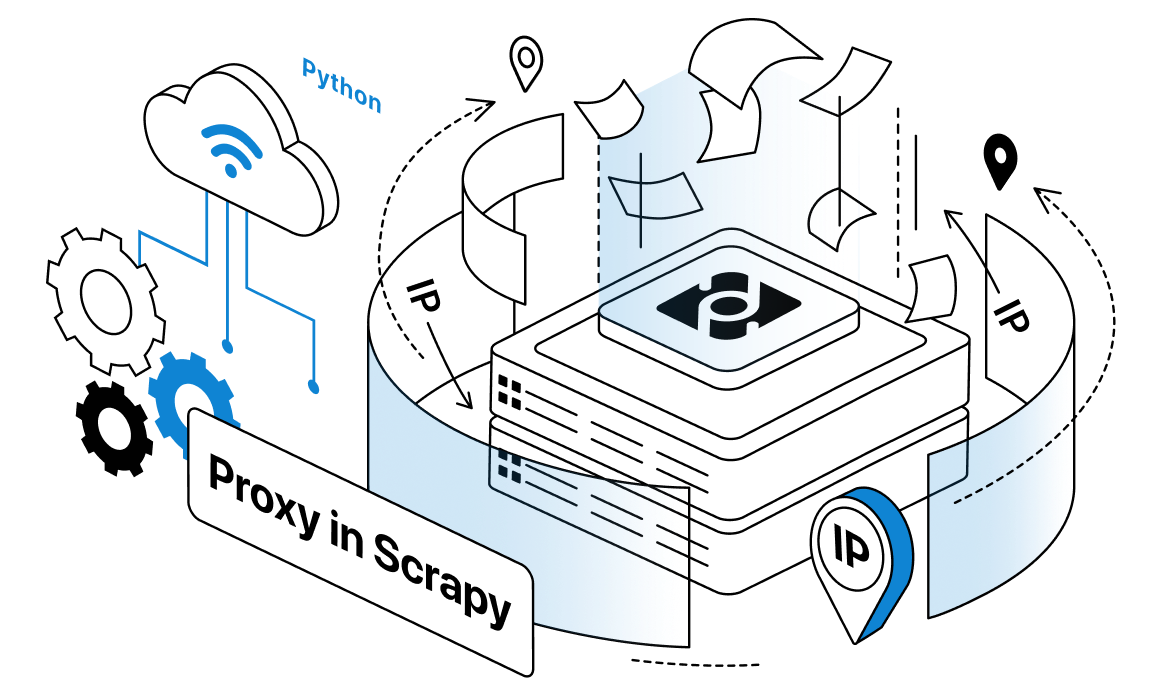

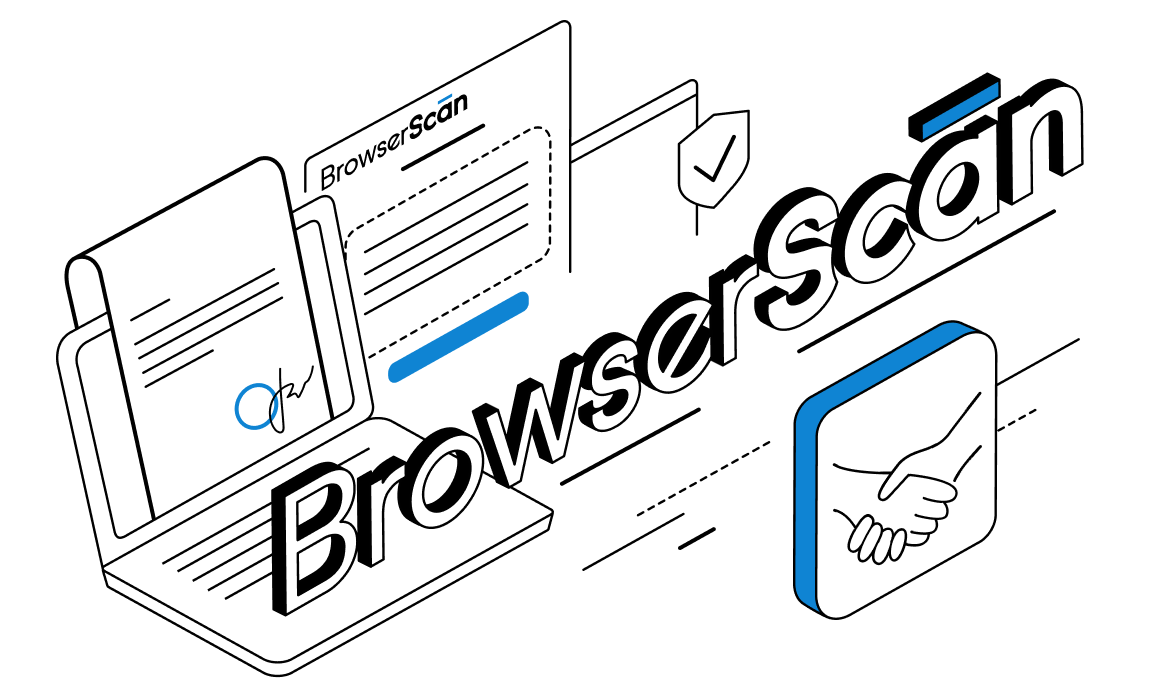
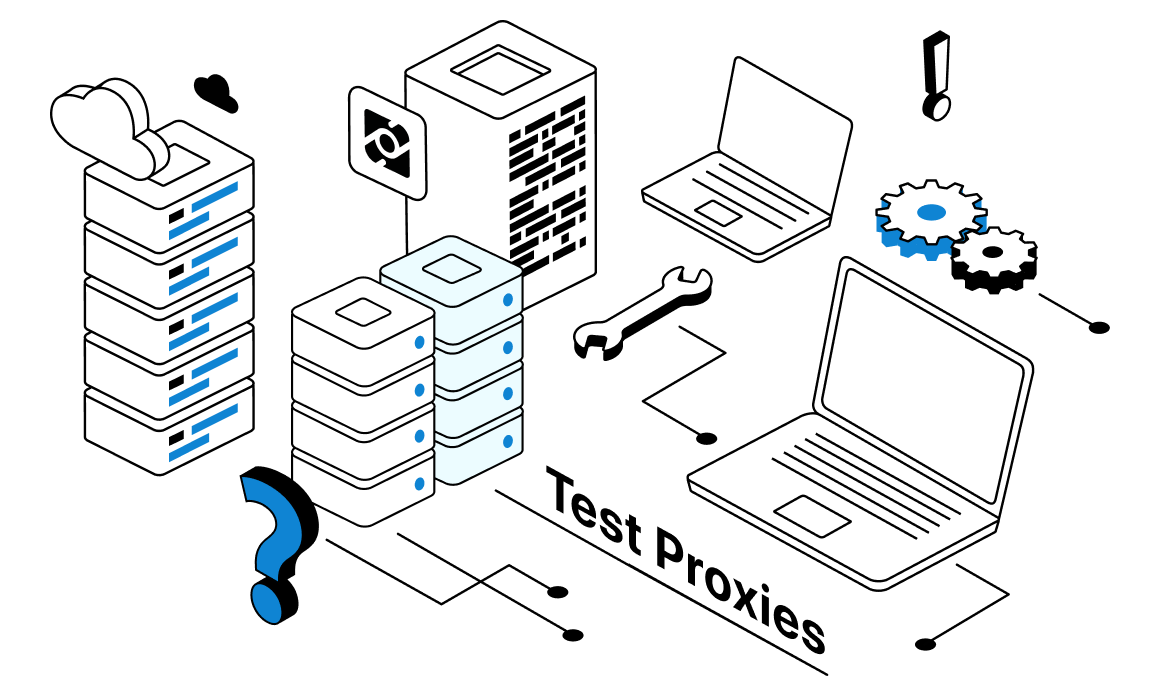
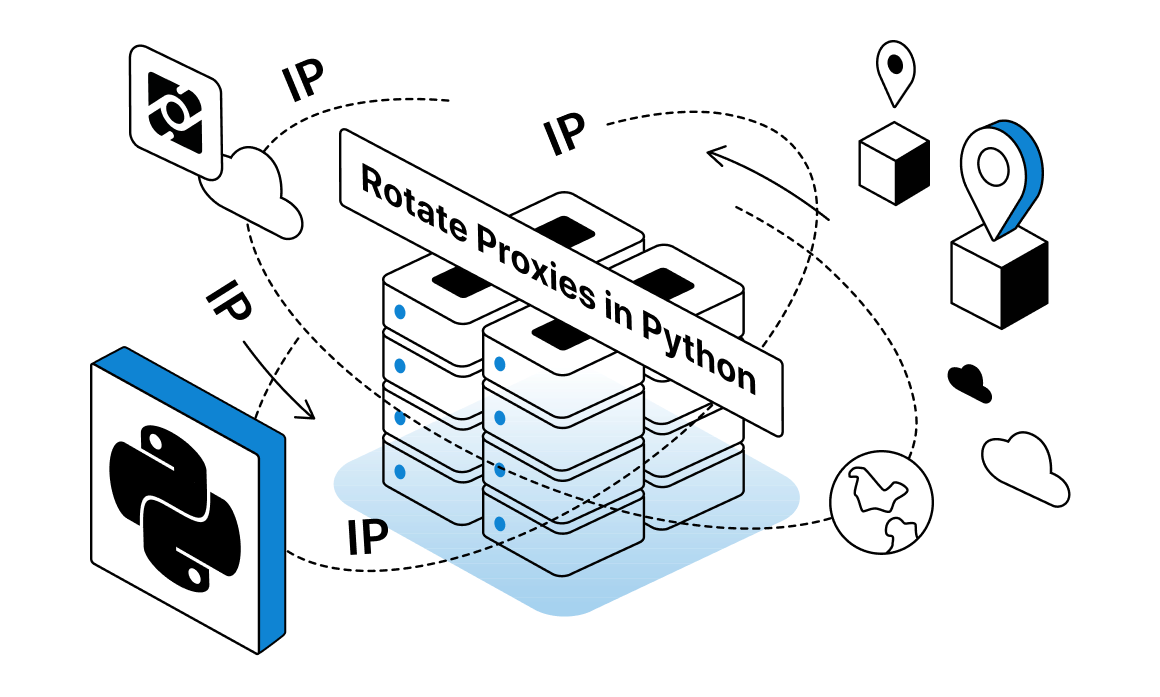

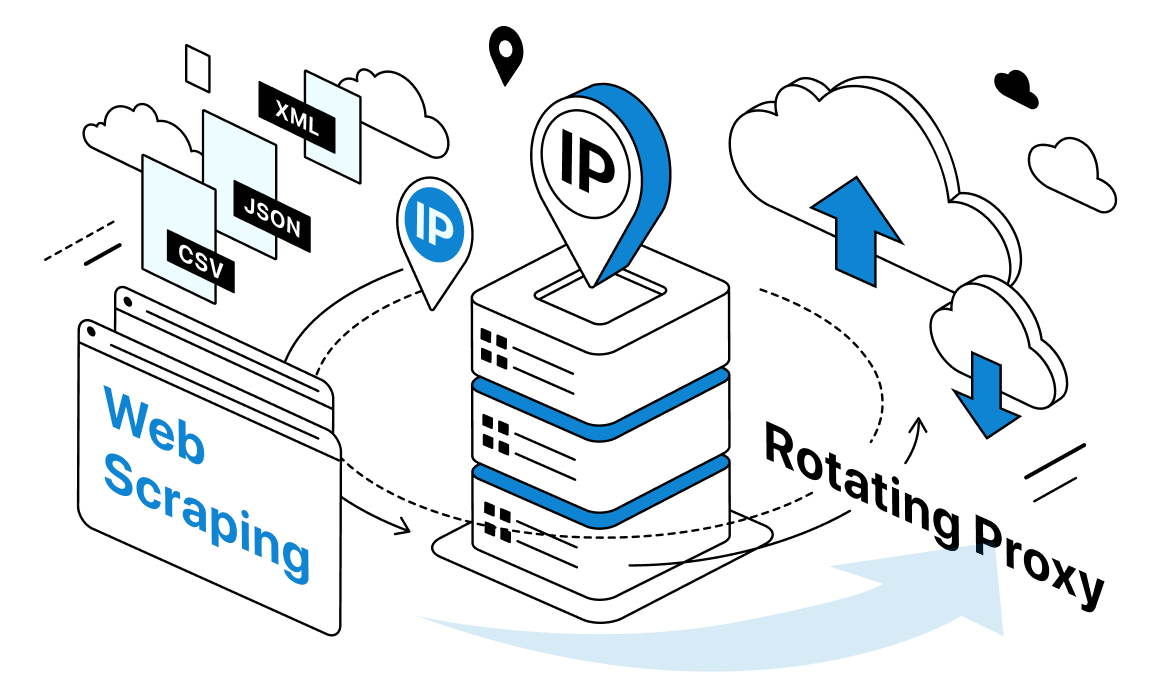

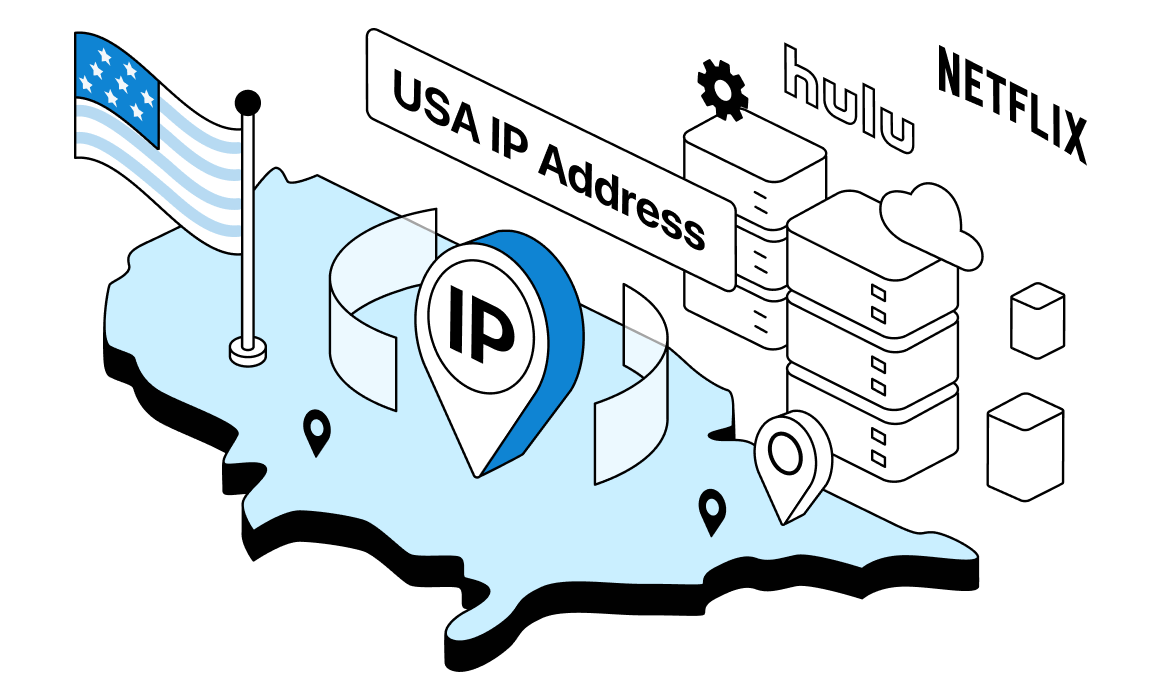

BrowserScan is an online tool that can analyze and show all of the advanced details about your current connection and provide you with a full review of your fingerprints. The first block of information that BrowserScan provides shows basic information about the connection and provides you with the score. This number represents potential privacy risks that you may face. The lower the score, the more risks you will encounter.